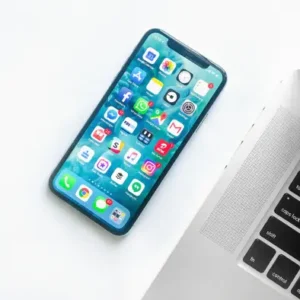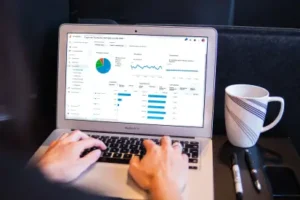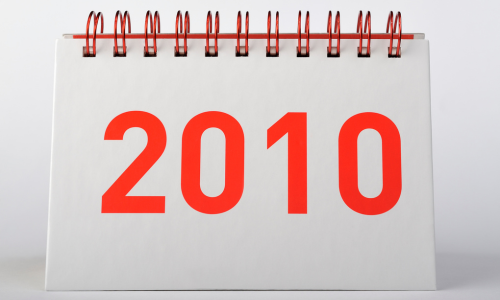The journey of each decade begins in its past, so let us dial back a little. The 1980’s was the decade of print, OOH media and TV, of Humara Bajaj, Mile Sur Mera Tumhara, and Onida’s green horned devil. Come 1990’s and the story changed – Internet floodgates were opened and email marketing saw light of the day. The Y2K years that followed brought in social media and with online games and chat boxes keeping people hooked, a virtual community began to take shape.
Once again in the 2010s the story changed. While it’s hard to pinpoint any winners, this has been a decade of both baby steps and quantum leaps. The rapid democratization of technology rubbed off on marketing in a big way. It has been a decade of digital marketing, analytics, automation, CRM, big data, customer advocacy, social media maturity, mobile and video marketing. In all this, content held centre stage. We also saw ROI tracking through the metrics – clicks, impressions, cost of lead, engagement – and these became the drivers of marketing investments. At the same time, privacy became a huge concern and acquiring the right talent became a major challenge for CMOs.
Let me pinpoint some of the major trends of 2010s that have impacted marketing in a big way:
Phone + humans = Phenomenal humans
Let’s be clear, when the 2010s began smart phones had already entered the market and were a rage. But the mobile penetration achieved in 2010s was nothing short of a wonder. Smart phone penetration in rural India rose from 9% in 2015 to 25% in 2018. A phone in each hand translated into empowerment, a democratized access to technology like never before. So while players like Big Basket or Amazon may have the means to snuggle into consumer phones through apps, the local kiranawala or supplier too could connect with his buyers via a simple (and perhaps more personal) WhatsApp. The playing field may not be level yet but it still had enough room for all. Also, any aspiring business now must have a website as well as an eCommerce platform. This decade gave consumers a taste of online shopping and there is no going back.
The Viral Fever
With the smart phones and faster internet came the flood of content in the digital world and in 2010s visual content hit the charts. Going viral was the thing of this decade and the beauty of it was that practically anyone and anything could go viral. With sleek and portable smart phones, attention shifted to the smaller screen and mobile optimization. Easy online streaming of content on phones also meant increased screen time. A greater share of consumer’s attention was up for grabs.

Since 2011, spending on digital marketing has been higher than spending on traditional advertising, according to the CMO Report. As we move into the new decade, the audio medium is now making a comeback in its digital avatar. Be it the rise of podcasts or the role of voice assistants in streamlining operations by eradiating language barrier, audio promises to hold great potential in years to come. But whatever be the medium, companies will continue to increase engagement with multiple digital platforms over traditional or non-digital channels.
The Social Media Mardi Gras
The 2010s opened up the grand social media party. Admittedly, the party had started early in the Y2K decade but in the Indian context it reached the masses in the 2010s. Friends, friends of friends and friends you were never friends with – are all friends and followers now. Social media brought the ‘world’ to ‘digital’, populating it and turning it into one giant community. A simple way to picture this is perhaps as a mela, or a giant carnival – and, hence the tremendous market! The decade saw proliferation of social media platforms on one hand and consolidation of advertising and revenue models on the other. Yet in 2019 social media marketing spend registered a slowdown (as per the 2019 CMO survey). However, overall it has seen an upward trajectory that isn’t expected to change anytime soon.

Also, social media has forced brands to think of their message in prevailing social context and not as isolated products. It provides brands opportunity to connect with consumers at a human-to-human level but also stirs a hornet’s nest as brand message can be misread or run risk of catching a rogue wave. Read: A Tale of Two Ads
The Key To All Doors – Analytics
Digital marketing has made analytics powerful and implementable like never before. We can now monitor campaigns, track outcomes, and even study customer behaviour. Marketers themselves have had to keep pace with the analytics, ever learning to trudge through the data to find actionable insights. Yet, interpreting the analytics and deciding a remedial course of action continues to fall within the grey zone of ‘experiment’. But, isn’t that what makes a marketer’s job exciting? The days of an AI that will remove human judgement from decision are still far off. For now, we do know that analytics will increasingly hold the key to the marketing question, knowing how to turn that key still takes a master.

Tech It Right
There’s already digital, social media and analytics, so why mention tech again? Because nothing defined the decade like MarTech. With CRM and Marketing Automation as its two arms, MarTech has been the buzzword. CRM was barely heard of 10 years back but the last decade has revolutionised business with companies constantly thinking outside the box to maintain an edge. Similarly, Marketing Automation has brought in efficiencies to the marketing flow. Naysayers will tell you that MarTech has reached a saturation point by consuming bigger budget shares over the decade. But I would say there’s much more to come in this segment in the coming decade.
As we step into the 2020’s privacy issues are going to emerge bigger with emphasis on gaining trust of the customer. Interactive content to avoid monologue and contextual marketing that addresses the intent of the buyer will become more and more important. Of course, the crushing weight of the pandemic will not be easy to get rid of. It’s hard to say at this point if we will see austerity in terms of budgets – that is bound to be a function of what recovery curve the economy takes. The pandemic and tech-enabled marketing has, however, enabled work from anywhere, a trend likely to span way beyond the next decade.

